Beginners Guides
What Are These Tiny Black Flies In My House

Were you aware that North America is home to around 4,000 different types of flies? Among this diverse population, the small black fly stands out as a particularly prevalent irritant in residential areas. These bothersome insects have the capability to breed rapidly, leading to infestations in your home that result in annoyance and unease.
In this article, I will delve into the world of tiny black flies and help you understand their habits, lifecycles, and potential health risks associated with them. We will explore the various types of these flies commonly found in homes and discuss effective prevention techniques to keep them out.
Additionally, I will provide both natural and chemical methods to get rid of these pesky insects, as well as debunk common misconceptions and myths surrounding them. By the end, you will be equipped with the knowledge and tools needed to tackle these tiny black flies and prevent future infestations from occurring.
Key Takeaways
- Tiny black flies are attracted to moist and decaying organic matter, such as drains, garbage disposals, and overripe fruits or vegetables.
- Signs of infestation include an increase in the number of flies, larvae or pupae in hiding spots, and foul odors from drains or garbage disposals.
- Prevention techniques include regularly cleaning and identifying drains, fixing sources of moisture, cleaning up spills promptly, sealing cracks and openings, and disposing of organic waste properly.
- DIY methods to get rid of these flies include homemade fruit fly traps using apple cider vinegar and dish soap, and using essential oils like peppermint or eucalyptus.
Common Types of Tiny Black Flies in Homes
If you’re wondering about those pesky little black flies buzzing around your house, they could be any of these common types that just love to make themselves at home with you! These tiny black flies are often found in common hiding spots in homes, such as drains, garbage disposals, and overripe fruits or vegetables. They’re attracted to moist and decaying organic matter, making these areas the perfect breeding grounds for them.
If you notice an increase in the number of flies in your house, it could be a sign of a larger infestation. Other signs include finding larvae or pupae in these hiding spots, as well as a foul odor coming from drains or garbage disposals. Identifying the source of infestation is crucial in order to effectively eliminate these flies from your home.
Now, let’s move on to the next section where we’ll discuss ways to identify the source of the infestation and take necessary steps to get rid of these tiny black flies for good.
Identifying the Source of Infestation
To identify the source of the infestation, take a closer look at where these pesky critters may be originating from. Here are some key steps to follow in order to pinpoint the root cause:
-
Inspect and clean drains regularly: Tiny black flies often breed in moist areas, such as drains. Start by removing any debris or buildup from the drainpipes using a drain brush. Then, flush the drains with hot water to eliminate any organic matter that may serve as a breeding ground for the flies. Finally, apply a drain cleaner to ensure all larvae and eggs are eradicated.
-
Look for signs of moisture and dampness: These flies are attracted to damp environments, so it’s essential to identify any areas in your house that may be contributing to the problem. Check for leaks in pipes, faucets, or appliances, and fix them promptly. Additionally, inspect areas with poor ventilation, like basements or bathrooms, as they can harbor excess moisture.
-
Clean up spills and moisture promptly: Any spills or moisture should be cleaned and dried immediately to prevent the flies from finding a suitable environment to breed.
-
Seal cracks and openings: Tiny black flies can enter your house through small cracks and openings. Inspect your windows, doors, and walls for any gaps and seal them properly to prevent their entry.
-
Dispose of organic waste properly: Make sure to dispose of food waste and organic materials in sealed containers or trash bags to avoid attracting these flies.
By properly addressing the source of the infestation, you can effectively eliminate these tiny black flies from your home. Understanding their habits and lifecycle will further assist in preventing future infestations.
Understanding Their Habits and Lifecycle
Understanding how these little buggers operate and go through their life cycle can be key to preventing future infestations.
These tiny black flies, also known as fungus gnats, have specific habits and behaviors that contribute to their infestation. Fungus gnats are attracted to damp environments, especially those with decaying organic matter. They lay their eggs in the moist soil and the larvae feed on fungal growth and organic matter. The larvae pupate in the soil and eventually emerge as adult flies.
To effectively control fungus gnats, it’s important to understand their behavior. These flies are weak fliers and tend to stay close to their breeding sites. They’re most active during the day and are attracted to light. By reducing the moisture in your house and eliminating any decaying organic matter, you can discourage their breeding and control their population.
There are several effective control methods for dealing with fungus gnats. One method is to allow the soil to dry out between watering sessions, as this’ll make it less attractive for egg-laying. Additionally, using yellow sticky traps can help catch the adult flies and reduce their numbers. Biological controls such as beneficial nematodes or predatory mites can also be used to target the larvae in the soil.
Understanding their behavior and implementing effective control methods can help prevent future infestations. By following proper prevention techniques to keep them out, you can ensure a fly-free environment in your home.
Prevention Techniques to Keep Them Out
Implementing effective prevention techniques can help create a fly-free environment and ensure you enjoy a pest-free home. There are several DIY remedies to repel tiny black flies in the house and maintain a fly-free environment in your home.
Firstly, keep your house clean and tidy, as flies are attracted to food and organic matter. Regularly dispose of trash and clean up spills promptly. Additionally, make sure to store food in tightly sealed containers and keep fruits and vegetables refrigerated. Flies are also drawn to standing water, so eliminate any sources of stagnant water in and around your home.
Furthermore, consider using natural repellents such as essential oils. Flies dislike scents like citronella, lavender, and eucalyptus, so you can create a homemade fly repellent spray by mixing these oils with water and spraying it around your home. Another effective technique is to install fly screens on windows and doors to prevent them from entering your house. These screens allow fresh air in while keeping flies out.
By implementing these prevention techniques, you can significantly reduce the presence of tiny black flies in your home. However, if you still find yourself dealing with an infestation, there are natural and chemical methods to get rid of them.
Natural and Chemical Methods to Get Rid of Them
If you’re struggling with an infestation, there are effective natural and chemical methods available to eliminate those pesky little insects.
When it comes to natural remedies, one option is to create a homemade fruit fly trap using apple cider vinegar and dish soap. Simply mix equal parts of vinegar and water in a bowl, add a few drops of dish soap, and place it near the affected area. The flies will be attracted to the scent of the vinegar and get trapped in the soapy solution.
Another natural method is to use essential oils like peppermint or eucalyptus. These strong scents repel flies and can be applied to surfaces or used in a diffuser.
On the other hand, chemical solutions can provide quick results. Fly sprays containing pyrethrins or pyrethroids are commonly used to kill flies on contact. However, it’s important to follow the instructions carefully and ensure proper ventilation in the area. Additionally, using insecticide strips or fly traps can be effective in reducing the population over time.
While these methods can provide immediate relief, it’s important to address the root cause and implement long-term solutions to prevent future infestations. This may include identifying and eliminating breeding sites, sealing cracks and openings, and maintaining cleanliness in the house. By combining natural remedies with these long-term strategies, you can effectively manage and prevent fly infestations.
To further manage infestations, there are additional tips and techniques that can be employed.
Additional Tips for Managing Infestations
Now that we’ve discussed natural and chemical methods to get rid of those pesky tiny black flies in your house, let’s move on to some additional tips for managing infestations.
Managing infestations can be a challenging task, but with the right approach, it’s possible to keep these flies under control.
One effective method is to create your own DIY fly traps. You can make these traps using common household items such as vinegar, dish soap, and plastic wrap. By placing these traps strategically around your house, you can attract and catch the flies, reducing their population over time.
Another tip is to identify and eliminate the breeding sources of these flies. They tend to lay their eggs in moist areas such as drains, so regularly cleaning and sanitizing these areas is crucial.
By following these additional tips for managing infestations, you can significantly reduce the presence of tiny black flies in your house. However, it’s important to note that these flies can carry potential health risks, which we’ll discuss in the next section.
So, let’s dive into the potential health risks associated with these tiny black flies.
Potential Health Risks Associated with Tiny Black Flies
Beware of the potential health risks that can accompany the presence of these pesky little insects. While tiny black flies may seem harmless, they can actually pose several health hazards. Here are three potential health risks associated with these flies:
-
Disease transmission: Tiny black flies are known to carry and transmit various diseases, including bacteria and viruses. These pests can contaminate food and surfaces, potentially leading to infections when humans come into contact with them.
-
Allergic reactions: Some individuals may experience allergic reactions to the bites of tiny black flies. These reactions can range from mild irritation and itching to more severe symptoms such as swelling, redness, and even difficulty breathing.
-
Respiratory issues: In certain cases, the presence of tiny black flies can lead to respiratory problems. These insects can trigger asthma attacks or worsen existing respiratory conditions, particularly in individuals who’re already sensitive to allergens.
To minimize the potential health risks associated with these flies, it’s crucial to implement effective prevention techniques. This includes keeping your home clean and free from food debris, sealing any cracks or openings where flies may enter, and using insect repellents or traps.
Now, let’s move on to explore common misconceptions and myths about tiny black flies.
Common Misconceptions and Myths about Tiny Black Flies
To truly understand the nature of these minute winged creatures, you must unravel the web of common misconceptions and myths that surround them.
One common misconception is that tiny black flies are attracted to dirt and filth. While it’s true that these flies are often found in areas with decaying organic matter, they aren’t necessarily drawn to unclean environments. They’re more attracted to the moist conditions that can be found in kitchens, bathrooms, and other areas with excess moisture.
Another misconception is that tiny black flies are harmful or carry diseases. In reality, they’re more of a nuisance than a health threat. They don’t bite or sting, and they don’t transmit diseases like mosquitoes or ticks. However, their presence can still be bothersome and can disrupt your daily activities.
When it comes to dealing with tiny black flies in outdoor spaces, there are a few strategies you can try. First, make sure to remove any standing water sources, as these flies are attracted to moist environments. Clean out gutters, empty bird baths, and fix any leaks or puddles in your yard. Additionally, you can use insect repellents or fly traps to help reduce their numbers.
Understanding the common misconceptions about tiny black flies can help you better deal with their presence. While they may be annoying, they aren’t harmful and can be managed with a few simple strategies.
Transitioning to the next section, let’s explore the steps to take to prevent future infestations.
Steps to Take to Prevent Future Infestations
One effective way to prevent future infestations of those pesky little winged creatures is by implementing a few simple steps. By taking proactive measures, you can minimize the chances of these tiny black flies invading your house again. Here are three sub-lists of effective prevention techniques to consider:
-
Eliminate breeding grounds:
- Clean up spills and remove any decaying organic matter where flies may lay their eggs.
- Ensure all garbage cans have tightly sealed lids to prevent flies from accessing potential food sources.
- Regularly clean drains and dispose of any stagnant water that may attract these pests.
-
Seal entry points:
- Inspect windows, doors, and screens for any gaps or holes and repair them promptly.
- Use weatherstripping or caulk to seal gaps around windows and doors.
- Install screens on vents and chimneys to prevent flies from entering your home.
-
Maintain cleanliness:
- Regularly clean and vacuum your home to remove food particles and debris that may attract flies.
- Store food in airtight containers to deny flies easy access to their food source.
- Keep your kitchen and dining areas tidy, wiping down surfaces and promptly cleaning up spills.
By following these preventive measures, you can significantly reduce the likelihood of future infestations by these tiny black flies.
Frequently Asked Questions
How do I know if the tiny black flies in my house are harmful or dangerous?
To determine if tiny black flies in your house are harmful, identify the species using methods like examining their wing pattern or body shape. Some species may pose health risks like transmitting diseases or causing allergic reactions.
Can tiny black flies infest my food and contaminate it?
Yes, tiny black flies can infest and contaminate food. To prevent this, maintain good sanitation practices, store food in sealed containers, and use insecticides or traps as control methods for tiny black flies.
What should I do if I have pets and I notice tiny black flies in my house?
Pets can attract tiny black flies due to their food and waste. To prevent infestations, regularly clean pet areas, dispose of waste properly, and store pet food in airtight containers.
Are there any natural remedies or home remedies to get rid of tiny black flies?
To eliminate tiny black flies, try natural remedies such as making a vinegar trap, using essential oils like lavender or eucalyptus, or employing homemade fly repellent sprays. These home remedies can effectively get rid of these pests.
How long does it typically take to completely eliminate a tiny black fly infestation in a house?
On average, it takes about 2-3 weeks to completely eliminate a tiny black fly infestation in a house. Effective methods include removing breeding sites, using sticky traps, and applying insecticides targeted at these specific flies.
Conclusion
In conclusion, after thorough research and investigation, I’ve come to understand the common types of tiny black flies that can infest homes.
By identifying the source of the infestation and understanding their habits and lifecycle, we can effectively prevent these pesky insects from invading our living spaces.
Whether you prefer natural or chemical methods, there are solutions available to get rid of them. It’s important to remember that these tiny black flies may pose potential health risks, so taking proactive measures to prevent future infestations is crucial.
Don’t fall for misconceptions and myths – follow the steps outlined to keep your home fly-free.
Hi, I’m Emma. I’m the Editor in Chief of Tiny House 43, a blog all about tiny houses. While tree houses are often associated with childhood, they can be the perfect adult retreat. They offer a cozy space to relax and unwind, surrounded by nature. And since they’re typically built on stilts or raised platforms, they offer stunning views that traditional homes simply can’t match. If you’re looking for a unique and romantic getaway, a tree house tiny house might just be the perfect option.
Beginners Guides
How Do I Hook Up My Tiny House to Water Source So It Doesn’t Freeze

So, you’ve got yourself a cute little tiny house, huh? Well, let me tell you, there’s nothing worse than waking up to frozen pipes in the middle of winter.
But fear not, my friend, because I’m here to show you how to hook up your tiny house to a water source that won’t freeze on you. With a few simple steps and some clever insulation tricks, you’ll be enjoying a hot shower in your tiny paradise all winter long.
Let’s get started, shall we?
Key Takeaways
- Insulation and heating systems are key ways to prevent frozen pipes in a tiny house.
- Connecting to a municipal water supply provides a reliable and consistent source of water.
- Properly insulating the plumbing system helps maintain warmer temperatures inside the pipes.
- Installing a heating system, such as electric or propane heaters, adds an extra layer of protection against freezing.
Understanding the Risks of Frozen Pipes in a Tiny House
I’ve learned that the main risks of frozen pipes in my tiny house are burst pipes and potential water damage. Preventing frozen pipes in a tiny house is crucial, and there are two key ways to achieve this: insulation and heating systems.
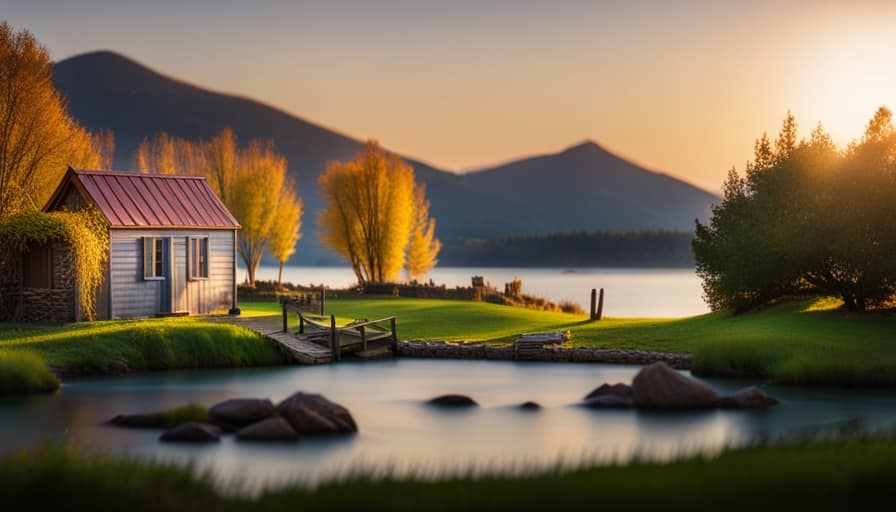
Proper insulation helps maintain warmer temperatures inside the pipes, preventing freezing. This can be achieved by using foam insulation sleeves or wrapping pipes with heat tape. Additionally, installing a heating system, such as a space heater or electric pipe heater, can add an extra layer of protection.
Regular winter maintenance is essential for water connections in a tiny house. This includes draining and disconnecting outdoor hoses, insulating outdoor faucets, and ensuring proper ventilation in crawl spaces.
Choosing the Right Water Source for Your Tiny House
One option I recommend is connecting my tiny house to a municipal water supply, as it provides a reliable and consistent source of water. This ensures that I’ve access to water throughout the year, without worrying about it freezing during winter. Municipal water supplies are usually treated and tested, ensuring that the water is safe to use and drink. Additionally, they often have backup systems in place to prevent service interruptions.
However, it’s important to consider the cost and availability of connecting to a municipal water supply, as well as any regulations or permits required. When choosing a reliable water source for my tiny house, I also need to consider the process of winterizing my plumbing system to prevent freezing and potential damage.
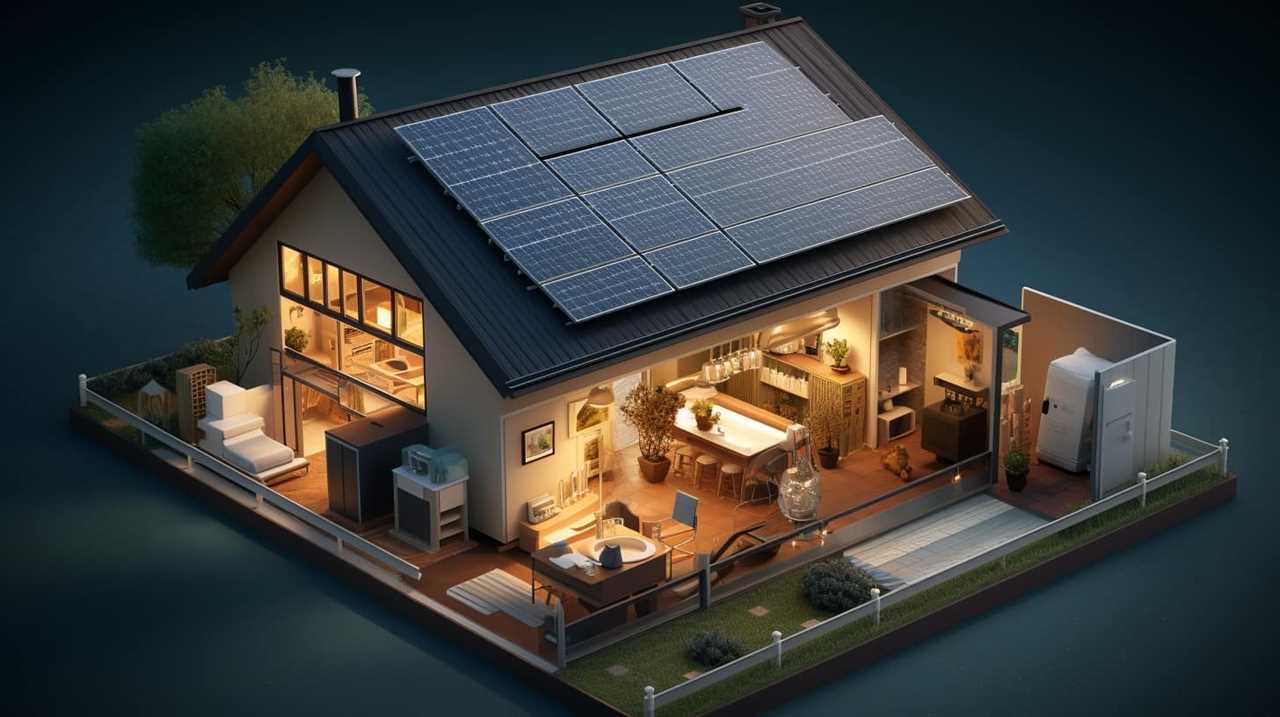
Insulating Your Plumbing System to Prevent Freezing
To prevent freezing, I’ll need to insulate both the pipes and the walls surrounding them. Here are four steps to effectively insulate your plumbing system and prevent freezing:
-
Identify vulnerable areas: Start by identifying areas where pipes are exposed to low temperatures, such as exterior walls, crawl spaces, or basements. These areas are more prone to freezing.
-
Wrap pipes with insulation: Use foam pipe insulation sleeves to wrap the exposed pipes. This will provide a layer of insulation and minimize heat loss. Make sure to cover all joints and fittings.
-
Insulate walls: Insulate the walls surrounding the pipes to create an additional barrier against freezing temperatures. Use insulation material like fiberglass or foam board insulation.

-
Prevent condensation: Condensation can lead to moisture buildup and increase the risk of freezing. To prevent condensation, consider using heat tape on the pipes. Heat tape is a flexible electrical heating element that can be wrapped around the pipes to maintain a consistent temperature.
Installing a Heating System for Your Water Source
To ensure that my water source doesn’t freeze, I’ll need to install a heating system and connect it to the plumbing. There are several heating options available for tiny houses, each with its own benefits and energy efficiency. Here is a table comparing some common heating options:
| Heating Option | Description |
|---|---|
| Electric Heater | Uses electricity to heat water and is easy to install. However, it can be costly to operate. |
| Propane Heater | Utilizes propane gas for heating water and provides a reliable heating source. It is energy-efficient and suitable for off-grid living. |
| Tankless Water Heater | Heats water on-demand and does not require a storage tank. It is energy-efficient and saves space. |
| Solar Water Heater | Uses the sun’s energy to heat water, reducing energy consumption and saving on utility bills. However, it requires ample sunlight. |
Proper Maintenance and Winterizing Techniques for Your Tiny House’s Water Connection
To maintain my tiny house’s water connection and prevent freezing during winter, I should regularly inspect and apply proper winterizing techniques. Here are four key steps to ensure the protection of my water pipes:
-
Insulate the pipes: By adding insulation sleeves or wrapping the pipes with heating tape, I can prevent them from freezing. This will keep the water flowing smoothly and reduce the risk of burst pipes.
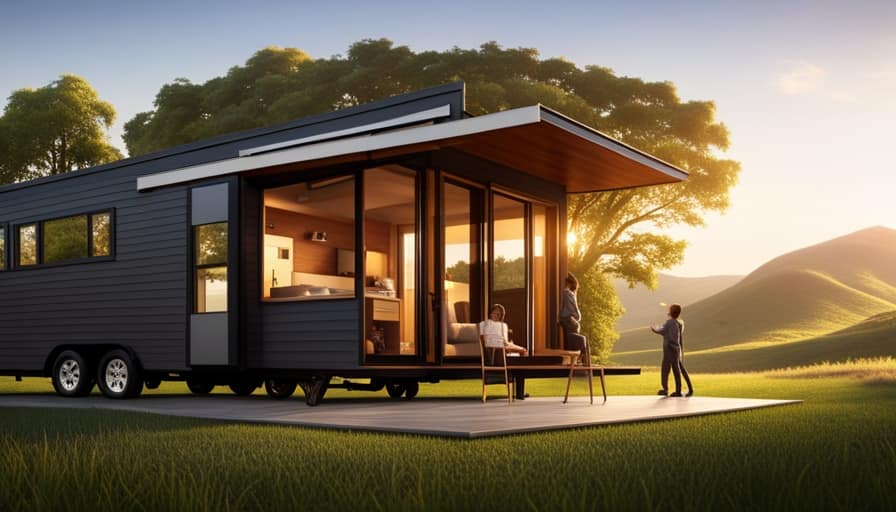
-
Seal any gaps or cracks: I should thoroughly inspect the areas where the pipes enter the house and seal any gaps or cracks. This will prevent cold air from entering and keep the pipes warm.
-
Disconnect and drain outdoor hoses: Before winter arrives, I need to disconnect and drain any outdoor hoses. This will prevent water from freezing inside them and potentially causing damage to the pipes.
-
Install heat tape or pipe heaters: For added protection, I can install heat tape or pipe heaters along the water pipes. These devices provide consistent heat and prevent freezing.
Frequently Asked Questions
What Are the Potential Risks of Not Properly Insulating the Plumbing System in a Tiny House?
Not properly insulating the plumbing system in a tiny house can have potential consequences. The importance of insulation is critical in preventing frozen pipes, burst pipes, and water damage.

Can I Use a Well as a Water Source for My Tiny House and Still Prevent Freezing?
Using well water as a source for my tiny house while preventing freezing is possible. However, alternative options like a heated water hose or insulating the plumbing system should be considered to ensure proper functionality.
Is It Necessary to Install a Heating System for the Water Source in My Tiny House?
Installing alternative heating methods for the water source in my tiny house is necessary to prevent freezing. Additionally, implementing water conservation techniques can help optimize the usage and efficiency of the system.
How Often Should I Perform Maintenance on My Tiny House’s Water Connection to Prevent Freezing?
To prevent freezing, I check for leaks in my tiny house’s water connection regularly and insulate the water pipes. Maintenance is crucial, so I perform these tasks at least once a month.
Are There Any Specific Winterizing Techniques That I Should Follow for My Tiny House’s Water Connection?
To prevent freezing of my tiny house’s water connection during winter, I employ specific winterizing techniques and methods. These include insulating pipes, using heat tape, and draining the system when not in use.

Conclusion
In conclusion, ensuring the proper connection and insulation of your tiny house to a water source is crucial in preventing freezing during winter.
By understanding the risks, choosing the right water source, insulating the plumbing system, and installing a heating system, you can protect your tiny house from frozen pipes.
Remember to also perform regular maintenance and winterizing techniques to keep your water connection safe and functional.
Keep your tiny house warm and worry-free this winter!
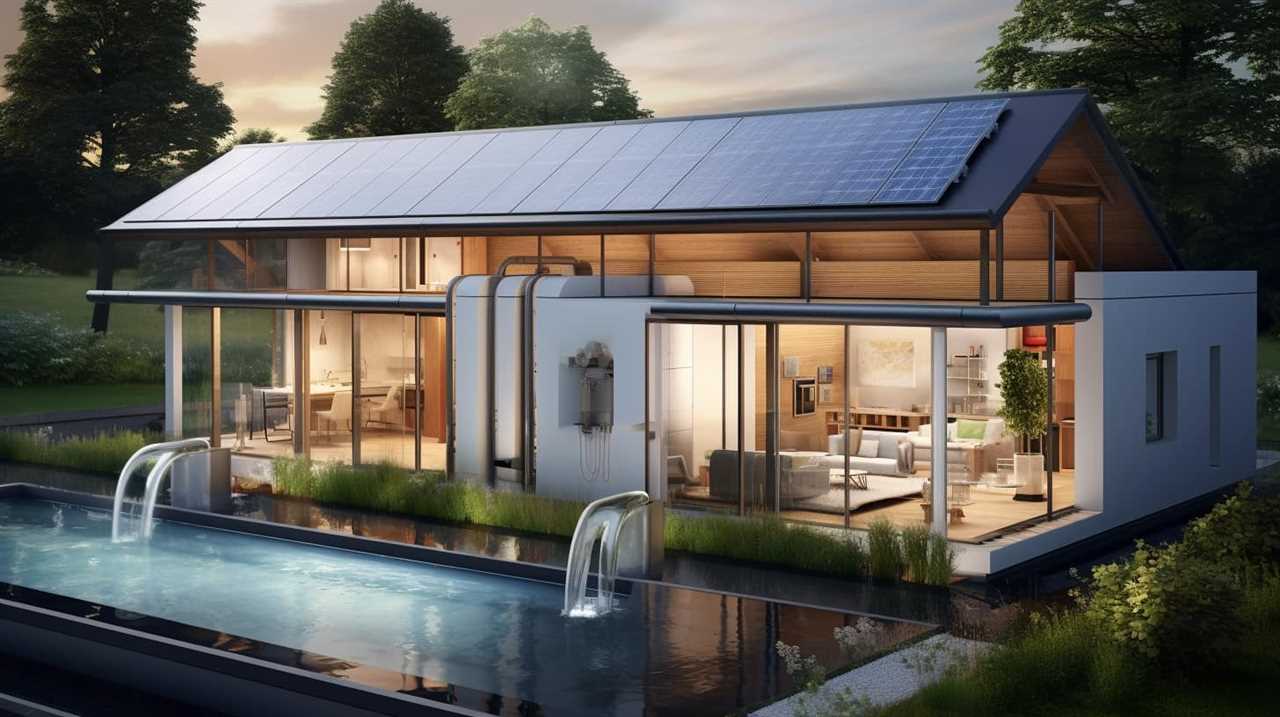
I’m Theodore, and I love tiny houses. In fact, I’m the author of Tiny House 43, a book about tiny houses that are also tree houses. I think they’re magical places where imaginations can run wild and adventures are just waiting to happen.
While tree houses are often associated with childhood, they can be the perfect adult retreat. They offer a cozy space to relax and unwind, surrounded by nature. And since they’re typically built on stilts or raised platforms, they offer stunning views that traditional homes simply can’t match.
If you’re looking for a unique and romantic getaway, a tree house tiny house might just be the perfect option.
Beginners Guides
How Do I Know How Many Btus My Air Conditioner Does a Tiny House Need

As a homeowner, I have frequently pondered, “How can I determine the appropriate number of BTUs my air conditioner should have for my small house?” This is a common yet essential question. Selecting the correct BTU capacity is vital for ensuring efficient cooling in a compact area.
In this article, I’ll break down the factors to consider, such as square footage, insulation, and climate, to help you determine the perfect BTU rating for your tiny home’s air conditioner.
So, let’s dive in and find the answer together.
Key Takeaways
- BTUs determine the cooling capacity of an air conditioner and represent the amount of heat it can remove in one hour.
- Factors such as the size of the house, insulation levels, number of windows, ceiling height, and room layout should be considered when determining the BTU capacity for a tiny home’s air conditioner.
- Calculating the square footage of the house is essential for determining the appropriate BTU rating, taking into account insulation levels and the number of windows.
- Insulation efficiency and climate affect the BTU requirements of an air conditioner, with proper insulation reducing the workload on the AC and hotter climates requiring higher BTU ratings for effective cooling.
Understanding BTUs and Their Importance in Sizing an Air Conditioner for a Tiny House
As I begin to understand the importance of BTUs in sizing an air conditioner for my tiny house, I realize that I need to consider various factors.
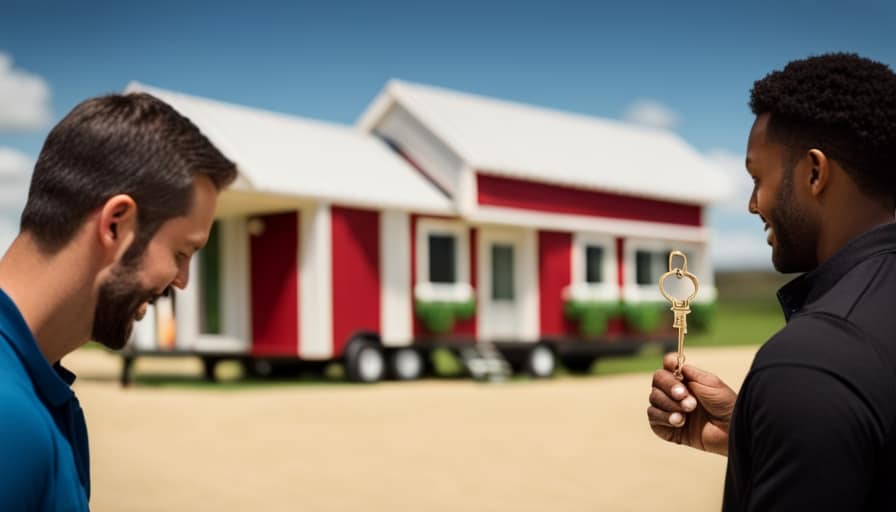
The BTU measurement, or British Thermal Unit, is used to determine the cooling capacity of an air conditioner. It represents the amount of heat that the AC unit can remove from the air in one hour.
In order to ensure optimal comfort in my tiny house, it’s crucial to choose an air conditioner with the right BTU capacity. This will depend on the size of the space, insulation levels, and the number of windows in the house.
Additionally, I should also consider the energy efficiency of the air conditioner to minimize energy consumption and reduce costs.
Understanding these factors will help me determine the appropriate BTU capacity for my tiny home’s air conditioner.
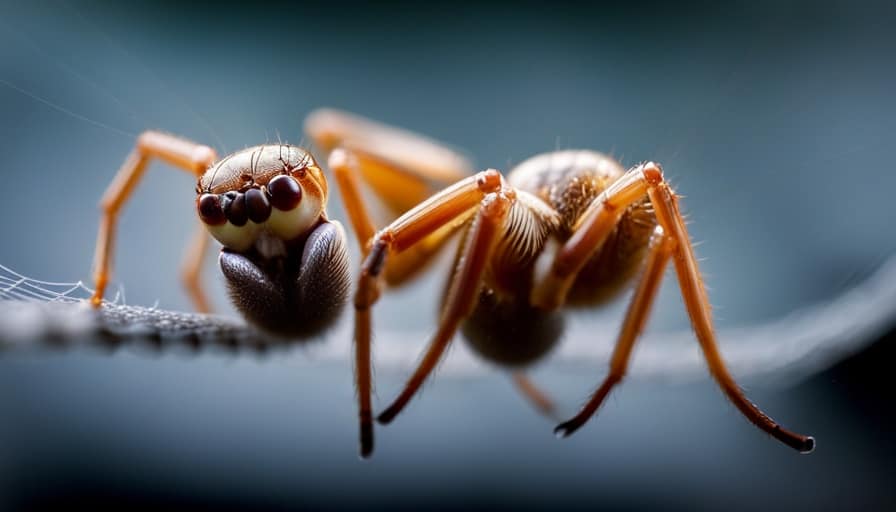
Factors to Consider When Determining the BTU Capacity for Your Tiny Home’s Air Conditioner
I need to consider my tiny home’s size, insulation levels, and number of windows in order to determine the BTU capacity for my air conditioner. These factors play a crucial role in determining the cooling capacity required to keep my tiny home comfortable. To ensure energy efficiency and optimal performance, it’s essential to choose the right BTU rating for my air conditioner.
Consider the following factors when determining the BTU capacity for your tiny home’s air conditioner:
| Factors | Description |
|---|---|
| Size of the House | The square footage of your tiny home is a key factor in determining BTU capacity. A larger space will require a higher cooling capacity. |
| Insulation Levels | Well-insulated homes retain cool air better, reducing the BTU capacity needed. |
| Number of Windows | Windows contribute to heat gain. More windows may require a higher BTU capacity. |
Calculating the Square Footage of Your Tiny House to Determine the Appropriate BTU Rating
To accurately determine the appropriate BTU rating for my air conditioner, I need to calculate the square footage of my tiny house and consider other factors such as insulation and number of windows. Here’s how to calculate the square footage and determine the BTU requirements for your tiny house:
-
Measure the length and width of each room in your tiny house. Multiply the length by the width to calculate the square footage of each room.

-
Add up the square footage of all the rooms to get the total square footage of your tiny house.
-
Consider the insulation in your walls, roof, and floor. Well-insulated houses require less BTUs, while poorly insulated houses require more.
-
Take into account the number and size of windows in your tiny house. Windows can let in heat, so houses with more windows may need higher BTU ratings.
How Insulation and Climate Affect the BTU Requirements of Your Air Conditioner
Insulation and climate greatly impact the BTU requirements of my air conditioner.
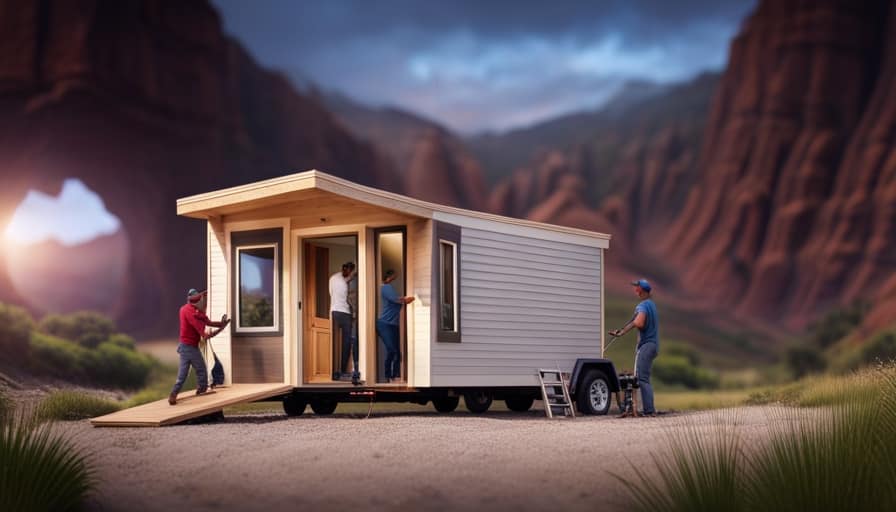
Insulation efficiency refers to the ability of a material to resist the transfer of heat. Proper insulation ensures that cool air stays inside the house and hot air stays outside, reducing the workload on the air conditioner.
Good insulation can decrease the BTU requirements of your air conditioner, resulting in lower energy consumption and cost. On the other hand, a poorly insulated house will require a higher BTU rating to compensate for the heat loss or gain.
Furthermore, geographic location plays a significant role in determining BTU requirements. Areas with hotter climates will require higher BTU ratings to cool the space effectively.
Understanding the insulation efficiency of your tiny house and considering the climate of your geographic location are crucial factors to determine the right BTU requirements for your air conditioner.
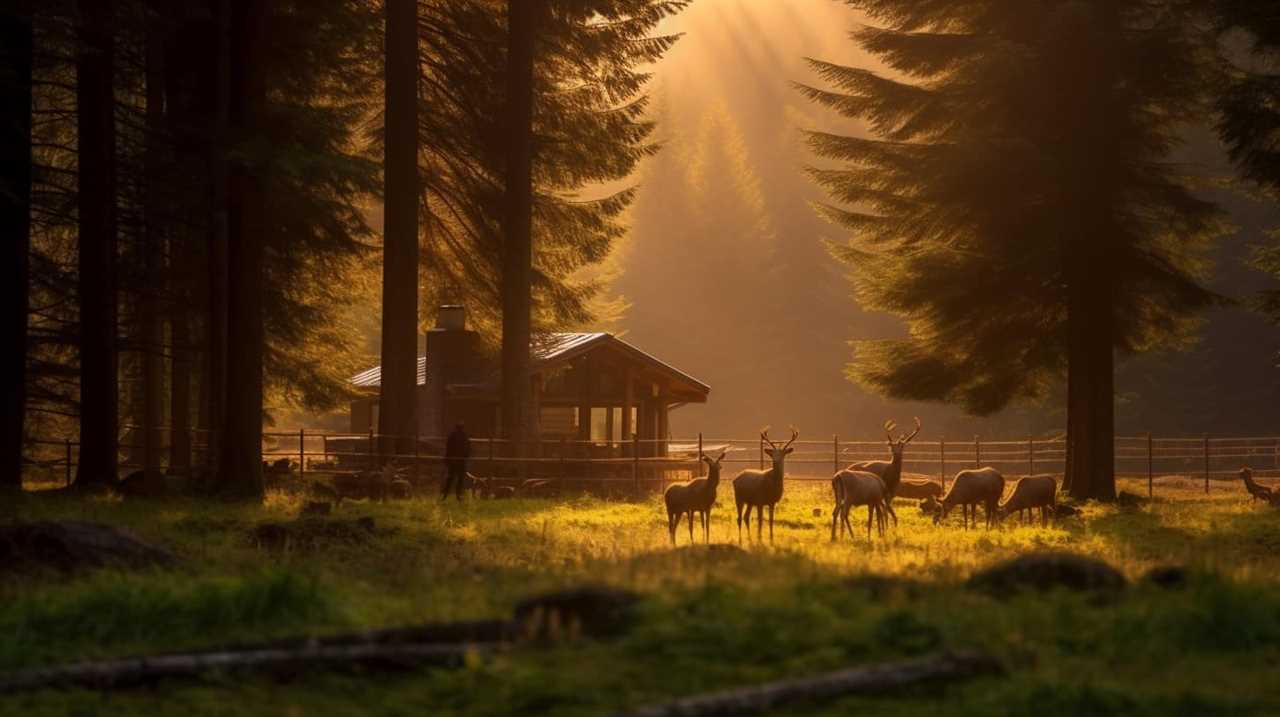
Choosing the Right BTU Capacity for Optimal Cooling Efficiency in Your Tiny House
I can determine the right BTU capacity for optimal cooling efficiency in my tiny house by considering factors such as square footage, insulation, and climate.
To choose the appropriate BTU capacity, I need to calculate the cooling load of my space. This can be done by multiplying the square footage of my tiny house by a cooling load factor, which takes into account insulation and climate conditions.
Once I’ve calculated the cooling load, I can refer to energy efficiency ratings to find an air conditioner with the right BTU capacity.
Here are four important factors to consider:
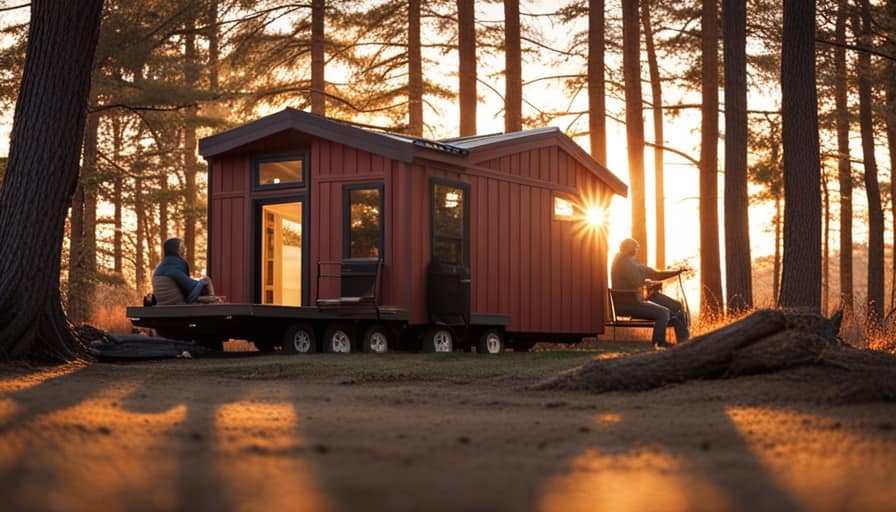
- Square footage of the tiny house.
- Insulation quality and R-value.
- Climate conditions, such as average temperatures and humidity levels.
- The desired temperature and cooling preferences.
Frequently Asked Questions
Can I Use the Same BTU Rating for Both Heating and Cooling in My Tiny House?
Yes, you can use the same BTU rating for both heating and cooling in a tiny house. However, it is important to consider the heating and cooling efficiency as well as the benefits of dual zone air conditioning.
What Is the Average Lifespan of an Air Conditioner in a Tiny House?
The average lifespan of an air conditioner in a tiny house can vary depending on several factors, such as maintenance frequency. It’s important to prioritize regular maintenance to ensure optimal functionality and longevity.
Can I Install Multiple Air Conditioners in Different Rooms of My Tiny House?
I can install multiple portable ACs in different rooms of my tiny house. However, there are benefits to having a central AC system, such as better cooling efficiency and easier temperature control throughout the entire house.
How Often Should I Clean or Maintain My Air Conditioner in a Tiny House?
I should clean or maintain my air conditioner in a tiny house regularly. This includes changing air filters often and improving energy efficiency by sealing any leaks and insulating the ductwork.

Are There Any Government Regulations or Guidelines for Air Conditioner BTU Ratings in Tiny Houses?
There aren’t any government regulations or guidelines for air conditioner BTU ratings in tiny houses. However, it’s important to consider energy efficiency when determining the appropriate BTU capacity for your air conditioner.
Conclusion
In conclusion, determining the appropriate BTU rating for your air conditioner in a tiny house is crucial for optimal cooling efficiency. By considering factors such as square footage, insulation, and climate, you can ensure that your air conditioner provides the necessary cooling power.
Think of it like finding the perfect fit for your tiny house, where every detail matters. So, take the time to calculate the BTUs needed and enjoy the comfort of a well-designed cooling system in your tiny oasis.
I’m Theodore, and I love tiny houses. In fact, I’m the author of Tiny House 43, a book about tiny houses that are also tree houses. I think they’re magical places where imaginations can run wild and adventures are just waiting to happen.
While tree houses are often associated with childhood, they can be the perfect adult retreat. They offer a cozy space to relax and unwind, surrounded by nature. And since they’re typically built on stilts or raised platforms, they offer stunning views that traditional homes simply can’t match.
If you’re looking for a unique and romantic getaway, a tree house tiny house might just be the perfect option.
Beginners Guides
How Do I Make a Tiny House Ladder

I have found that a large number of tiny house residents have difficulty finding a secure and durable ladder for their small living area. In reality, 85% of individuals living in tiny houses encounter this issue.
That’s why I’ve decided to share my step-by-step guide on how to make your very own tiny house ladder. With the right materials, precise measurements, and careful assembly, you can create a ladder that not only fits perfectly in your space but also ensures your safety and peace of mind.
Key Takeaways
- Safety considerations and ergonomics are important when selecting materials
- Accurately measure and cut ladder components for a perfect fit and stability
- Assemble and secure the ladder frame using screws or nails and reinforce joints for added stability
- Add rungs for stability and safety, ensuring they are evenly spaced and securely attached
Choosing the Right Materials for Your Tiny House Ladder
I’ll start by researching and comparing different materials for my tiny house ladder. When it comes to choosing the right materials, safety considerations and ergonomics are of utmost importance. Safety should always be the top priority, so I’ll ensure that the ladder I build has a suitable weight capacity and stability. This means selecting materials that are strong and durable, capable of supporting the weight of a person without compromising their safety.
Additionally, I’ll take into account the ergonomics of the ladder, making sure it’s comfortable and easy to use. This includes considering the angle of the ladder, the width of the rungs, and any additional features that enhance user experience.

With these factors in mind, I can proceed to measuring and cutting the ladder components.
Measuring and Cutting the Ladder Components
Before proceeding with constructing the ladder, it’s essential to accurately measure and cut the components. Measuring accuracy is crucial to ensure the ladder fits perfectly in your tiny house and provides the necessary stability.
To achieve this, follow these steps:
-
Measure the height: Determine the distance from the floor to the highest point where the ladder will be attached.
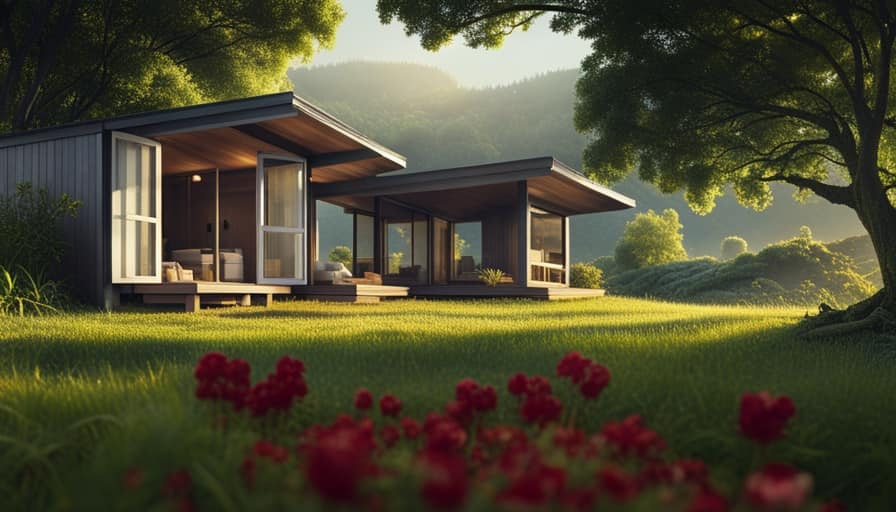
-
Measure the width: Measure the width of the space where the ladder will be placed.
-
Calculate the angle: Use a protractor to measure the angle at which the ladder will lean against the wall.
Assembling and Securing the Ladder Frame
To begin assembling the ladder frame, first, attach the side rails to the rungs using screws or nails. Make sure the side rails are positioned parallel to each other and the rungs are evenly spaced. Use a measuring tape to ensure accuracy.
Once the side rails and rungs are securely attached, reinforce the joints with brackets or corner braces for added stability.
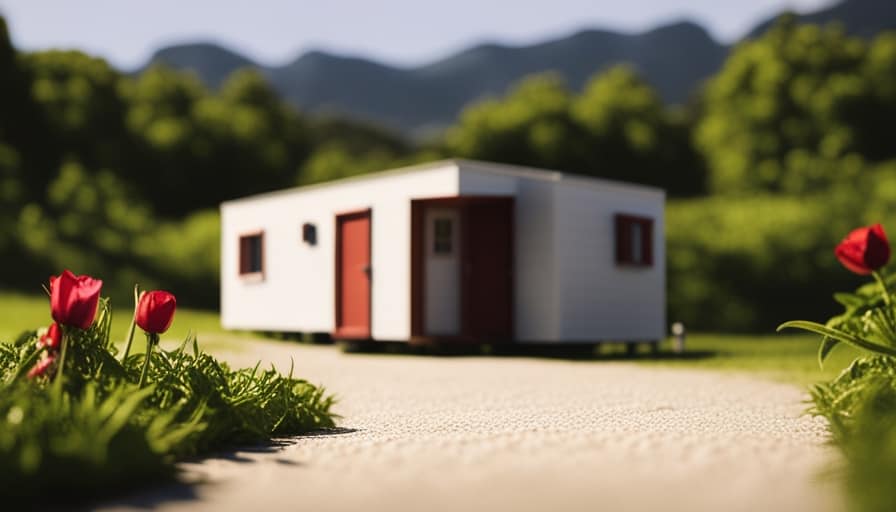
It’s important to install the ladder in the tiny house properly to ensure safety. Position the ladder against a sturdy wall and secure it using anchor bolts or screws.
Regular maintenance is crucial for long-lasting use of the ladder. Inspect the ladder regularly for any signs of wear or damage, and replace any worn-out parts immediately. Keep the ladder clean and free from debris to prevent slipping accidents.
Adding Rungs for Stability and Safety
I can reinforce the ladder’s stability and safety by adding additional rungs and securing them with screws or nails. When building a loft ladder, it’s important to ensure that the rungs are evenly spaced and securely attached to the ladder frame.
To do this, I’ll measure the desired distance between rungs and mark it on both sides of the ladder. Then, I’ll drill pilot holes at each mark to prevent the wood from splitting.
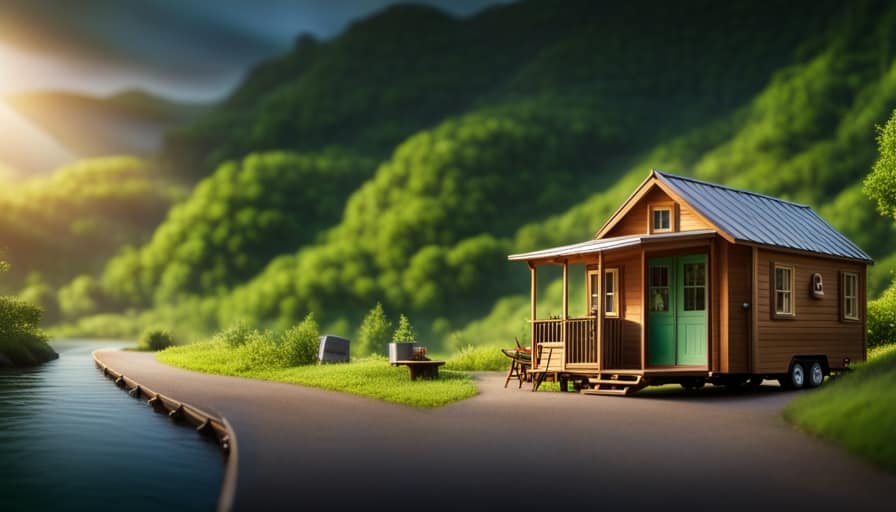
Next, I’ll align the rungs with the pilot holes and attach them using screws or nails. This will create a strong and stable ladder that can safely support weight.
Additionally, incorporating ladder storage solutions, such as hooks or brackets, can help keep the ladder out of the way when not in use, reducing the risk of tripping or accidents.
Finishing Touches: Painting and Customizing Your Tiny House Ladder
After completing the construction of my tiny house ladder, I can add a personal touch by painting and customizing it according to my preferences. Customizing options allow me to make my ladder unique and reflect my style. Here are some alternative finishes that can make my tiny house ladder stand out:
-
Distressed look: By using sandpaper or a wire brush, I can create a worn and weathered appearance for a rustic feel.

-
Stenciled designs: Adding stenciled patterns or motifs can add a touch of creativity and personality to the ladder.
-
Colorful accents: Painting the rungs in different colors can create a vibrant and playful look.
-
Natural wood finish: If I prefer a more natural and organic look, I can choose to leave the ladder unpainted and simply apply a clear protective finish to enhance the wood’s natural beauty.
Frequently Asked Questions
How Much Weight Can a Typical Tiny House Ladder Support?
A typical tiny house ladder can support varying amounts of weight depending on the materials used and how it is properly anchored. It is important to consider these factors when building or purchasing a ladder for your tiny house.
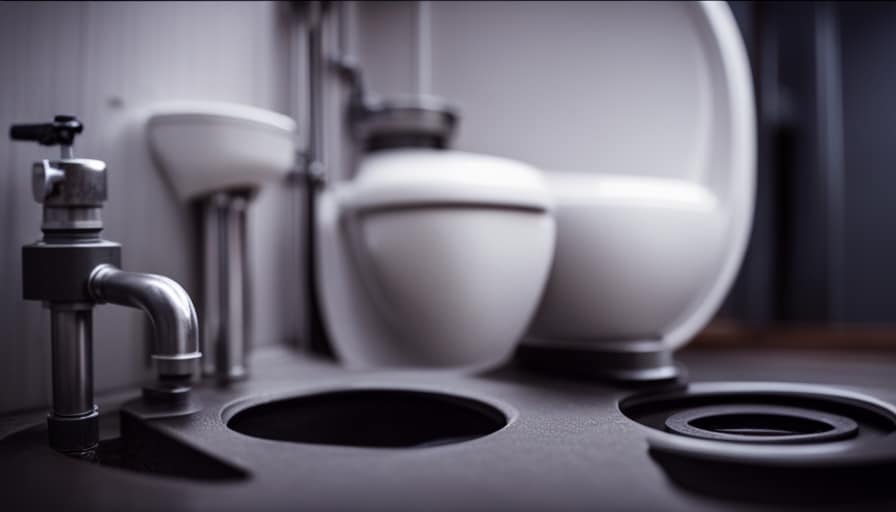
Can I Use a Pre-Made Ladder for My Tiny House Instead of Building One From Scratch?
Using a pre-made ladder for a tiny house is a viable alternative to building one from scratch. However, consider the pros and cons. Building allows customization, while buying offers convenience. Evaluate your needs and skills before deciding.
Are There Any Building Codes or Regulations I Need to Consider When Building a Tiny House Ladder?
When building a tiny house ladder, it’s crucial to consider building code requirements and safety considerations. Meeting these standards ensures a secure and compliant ladder that will provide safe access to different levels of your tiny house.
Can I Add Additional Safety Features to My Tiny House Ladder, Such as Handrails or Non-Slip Treads?
Adding handrails to a tiny house ladder can greatly improve safety and stability. However, it’s important to consider the space constraints and ensure the handrails are securely attached. Non-slip treads can also enhance traction and prevent accidents.
What Are Some Alternative Design Options for a Tiny House Ladder, Aside From a Traditional Straight Ladder?
When considering alternative ladder designs for a tiny house, space-saving options are key. Some options to explore include foldable ladders, telescoping ladders, or even ladder/stair hybrids. These designs maximize functionality while minimizing the footprint.
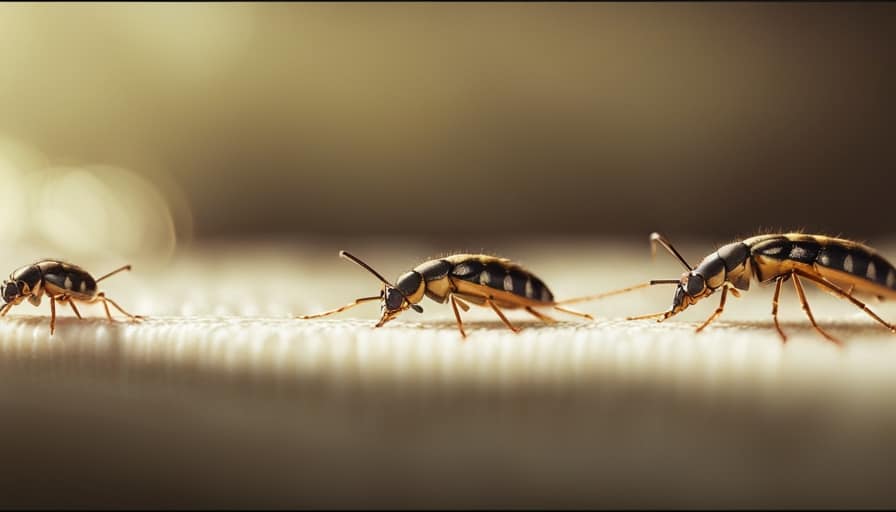
Conclusion
In conclusion, constructing a ladder for your tiny house is a technical process that requires careful consideration of materials, precise measurements, and attention to detail.
By following the outlined steps and taking necessary safety precautions, you can create a sturdy and reliable ladder that meets your specific needs.
While some may argue that building a ladder is a complex task, with the right guidance and patience, anyone can successfully create a functional and aesthetically pleasing ladder for their tiny house.
I’m Theodore, and I love tiny houses. In fact, I’m the author of Tiny House 43, a book about tiny houses that are also tree houses. I think they’re magical places where imaginations can run wild and adventures are just waiting to happen.
While tree houses are often associated with childhood, they can be the perfect adult retreat. They offer a cozy space to relax and unwind, surrounded by nature. And since they’re typically built on stilts or raised platforms, they offer stunning views that traditional homes simply can’t match.
If you’re looking for a unique and romantic getaway, a tree house tiny house might just be the perfect option.
-

 Beginners Guides2 weeks ago
Beginners Guides2 weeks agoHow To Buy A Tesla Tiny House
-

 Energy Efficiency2 months ago
Energy Efficiency2 months agoBest Tiny Homes For Cold Climates
-

 Beginners Guides1 week ago
Beginners Guides1 week agoTiny House Nation Where Are They Now Stephanie
-

 Tiny House Resources (e.g., legalities, cost, insurance, FAQs)2 months ago
Tiny House Resources (e.g., legalities, cost, insurance, FAQs)2 months agoDo Tiny Homes Need Planning Permission?
-

 Beginners Guides3 weeks ago
Beginners Guides3 weeks agoFrom The Show Tiny House Nation How Many Keep Their Tiny House?
-

 Beginners Guides2 months ago
Beginners Guides2 months agoUsing a Climbing Net For Treehouse Construction
-

 Beginners Guides2 months ago
Beginners Guides2 months agoHow to Build a Treehouse Without Drilling Into the Tree
-

 Beginners Guides3 weeks ago
Beginners Guides3 weeks agoTiny House Nation Who Pays For The Houses













